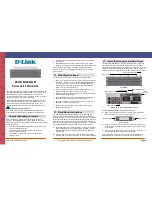
293
Predefined user roles
network-admin
network-operator
Usage guidelines
In XML view, use NETCONF messages to configure the device or obtain data from the device. The
NETCONF operations you can perform depend on the user roles you have, as shown in
.
Table 57 NETCONF operations available for the predefined user roles
User role
NETCONF operations
network-admin All
NETCONF
operations
network-operator
•
Get
•
Get-bulk
•
Get-bulk-config
•
Get-config
•
Get-sessions
•
Close-session
NETCONF messages must comply with the XML format requirements and semantic and syntactic
requirements in the NETCONF XML API reference for the device. As a best practice, use third-party
software to generate NETCONF messages to ensure successful configuration.
To quit XML view, use a NETCONF message instead of the
quit
command.
If you have configured a shortcut key (
Ctrl
+
C
, by default) by using the
escape-key
command in
user line/user line class view, the NETCONF message should not contain the shortcut key string. If
the NETCONF message contains the shortcut key string, relevant configurations in XML view might
be affected. For example, in user line view, you configured "a" as the shortcut key by using the
escape-key a
command. When a NETCONF message includes the character "a," only the contents
after the last "a" in the message can be processed.
Examples
# Enter XML view.
<Sysname> xml
<?xml version="1.0" encoding="UTF-8"?><hello
xmlns="urn:ietf:params:xml:ns:netconf:base:1.0"><capabilities><capability>urn:ietf:pa
rams:netconf:base:1.1</capability><capability>urn:ietf:params:netconf:writable-runnin
g</capability><capability>urn:ietf:params:netconf:capability:notification:1.0</capabi
lity><capability>urn:ietf:params:netconf:capability:validate:1.1</capability><capabil
ity>urn:ietf:params:netconf:capability:interleave:1.0</capability><capability>urn:hpe
:params:netconf:capability:h3c-netconf-ext:1.0</capability></capabilities><session-id
>1</session-id></hello>]]>]]>
# Quit XML view.
<rpc message-id="101" xmlns="urn:ietf:params:xml:ns:netconf:base:1.0">
<close-session>
</close-session>
</rpc>]]>]]>
<Sysname>
















































